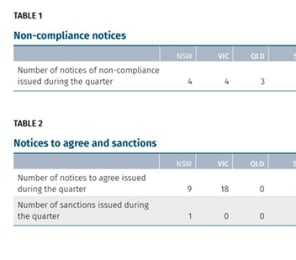More residential care providers are making the leap into the home care space, but 18 months out from the new program, providers need to carefully consider their technology investment now – and be prepared to outlay a higher spend, says Epicor ANZ VP Greg O'Loan.
With the Federal Government pushing back the launch of its Support at Home program to July 2024 and consultations still underway, little is known about the shape of the new Program. But with seven out of 10 residential care providers now running at a loss according to the latest StewartBrown data, Greg says an increasing number of their clients are looking to home care to remain viable.
The enterprise software provider services over 50% of the mid- to large-sized providers in the residential care space.
“Residential care providers are fast growing their home care businesses, and that’s a no-brainer when you look at the recent StewartBrown data and the 30% increase in consumers in the home care space,” Greg said.
While he welcomes the introduction of the new Program, Greg says many providers are not prepared however for the implications of the reform process on their technology investment and bottom line.
“We can automate and we standardise to compliance as much as possible, but everyone has their own unique way they want to run their organisation, and providers certainly don’t want to have to invest in software now and then again when the reforms roll out.”
Attracting new clients in the home care space requires a certain level of scale, he added – and with inflation expected to continue to impact on providers’ costs, putting improved software in place to deliver efficiencies and plan ahead for growth is critical.
He identifies three key areas for operators to consider when investing in software now:
Compliance
“There is a necessity here, not a choice, but having the functionality to provide better reporting and better visibility of your business is key.”
“We also have a number of projects running where customers are looking to the Internet of Things to gain a competitive advantage, such as AI-based solutions where they can develop some predictive analysis and build dashboards to show the trends and identify future gaps in their business.”
“For example, in residential care, looking at your vacancy rate because running a facility with 80% occupancy is effectively running at a loss. The same applies to home care – if you can ensure that your workers are staying within a geographical footprint , you’re not billing drive time to clients out of area and saving on wages and running costs.”
Workforce
“Software should also be simple enough for your workforce to be able to use, so fewer buttons, and an easier to use interface to improve productivity.”
Interoperability
Last year, DCM Group and Epicor published a White Paper which found just 11% of aged care operators surveyed ranked the interoperability of their software applications as ‘good’. Not a single operator said their interoperability was ‘great’.
“We have seen aged care providers with up to 30 different pieces of software running,” said Greg.
“You need a software provider that can take many different systems and provide that integration so the flow of technology matches your needs. The greater the automation, the greater the productivity so creating efficiencies in your software is key.”
As a rule of thumb, Greg says the average spend on technology shouldn’t be higher than 10%, but operators should be prepared to outlay more on technology during the reform process in order to reap the long-term benefits.
“You may need a heavier upfront investment when implementing new projects because of the costs of the software and the workforce required to roll it out, but that then should settle down over the long-term outlook.”
For an organisation with a $5 million turnover, 10% still equates to a $500,000 spend per year on IT.
Can you say that your organisation is matching this level of IT investment?










